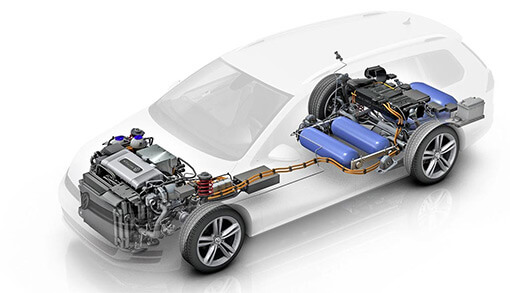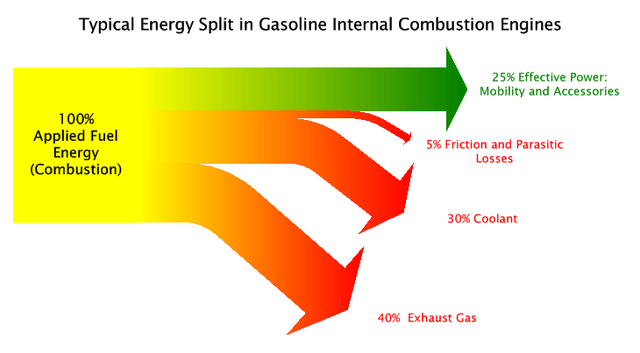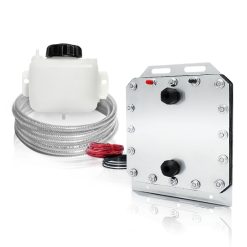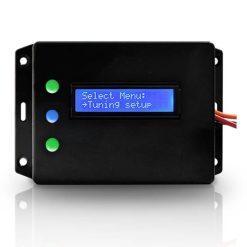No products in the cart.
facts about hho
How hydrogen generators for vehicles work
The greatest misconception about hydrogen is that we are making fuel from water. This is entirely incorrect and if it were true, would violate several laws of physics.
It is NOT possible to generate hydrogen at a rate fast enough to be used as the primary fuel.
Hydrogen powered cars do exist. They are designed to use Hydrogen as primary fuel. The hydrogen is created in advance. Just as every ordinary car requires a tank for gasoline, hydrogen is stored within cylinders on board the vehicle.
Our equipment is an inexpensive retrofit, compatible with any vehicle type and size.
Hydrogen assists the combustion process of the existing fuel. Although you will enjoy substantial fuel savings, you will still have to use the primary fuel.
Hydrogen generators use electricity from the battery of the vehicle to split the water (H2O) into its basic elements of oxygen and hydrogen. The generated hydrogen is then injected into the air stream of the vehicle to improve combustion efficiency and fuel economy.
In a standard engine, the combustion cycle is very fast: 0.007 seconds. Most of the fuel molecules are too large to burn completely in this extremely limited time.
The situation is made worse by the fact that the spark plug only ignites a small percentage of the fuel. The fire generated must cascade from one fuel molecule to the next as it propagates through the combustion chamber of the engine. This wastes precious time.
Hydrogen burns and travels through the combustion chamber 10X faster than a gasoline flame. Hydrogen fills the space between fuel molecules and has the effect of making them closer together. The flame travels faster and the fuel is exposed to flame sooner and for a longer period of time. The result is a cleaner, more complete burn.
You can think of hydrogen as a giant spark plug in your engine; igniting all the fuel instead of leaving much of it unburned.
The science behind hydrogen injection has been well documented and understood. It has been known for over thirty years that the addition of hydrogen to fossil fuels, burned in internal combustion engines, will increase the efficiency of the engine.
This concept has been validated by a multitude of papers published by the Society of Automotive Engineers (SAE).
Read more:
Results of NASA’ s experiments with hydrogen in internal combustion engines
Design of HHO generators: importance of the number of plates
One of the most important aspects of a dry cell design is the number of electrode plates.
The efficiency of a dry cell increases with the number of plates, to a maximum of seven.
The seven plate design forms six electrolysis reaction chambers where there is one positive, one negative positive and five neutral plates. Each reaction chamber requires 2 Volts, that is why a 12 Volt car is limited to seven plates cell.
13, 18, etc. plate dry cells are simply several 6-chamber cells connected together to form one unit. Every individual cell still functions at 12 V.
It is the size of the surface of the neutral plates that is the essential for hydrogen generation and that is what makes an efficient, well-designed Hydrogen cell.
Read more: How to calculate maximum Hydrogen output
Summary
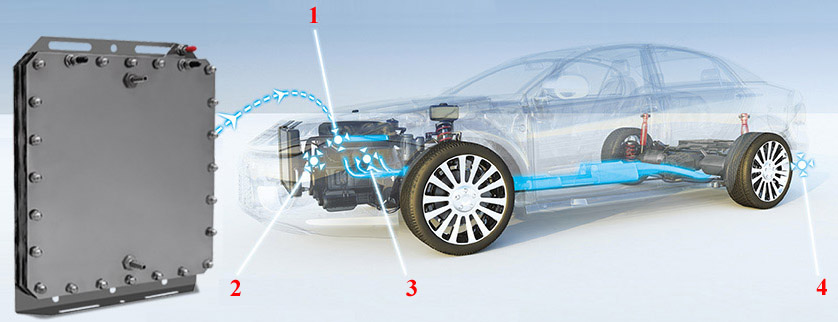
Article Name
Information about hydrogen HHO generators for vehicles, cell design, electricity consumption
Description
Hydrogen HHO generators use electricity from the battery of a vehicle to split water (H2O) into Hydrogen and Oxygen. The resultant gas is referred to as HHO.
Hydrogen is generated only when the engine of the vehicle is activated and it is never stored in the system. The instant that HHO is produced, it gets immediately injected into the engine where it blends with the existing fuel.
The mixture of HHO and fuel burns more efficiently, reducing fuel consumption and the amount of pollutants released in the air.
Author
Better Fuel Technology
Publisher Name
Better Fuel Technology
Publisher Logo

Amount of hydrogen required per size of engine
The amount of hydrogen required is determined by the size of the engine.
0.15 Litres/minute per 1L of engine size is ideal.
For example, a 3L engine will achieve best results with a generator producing hydrogen at a rate of 0.5 L/minute.
Hydrogen supplementation is subject to the law of diminishing returns.
Adding hydrogen improves the efficiency of the engine, but only to a certain point.
Tests prove that flooding the engine with too much Hydrogen DECREASES its efficiency and performance.
Read more: What happens when too much hydrogen is supplied to an engine
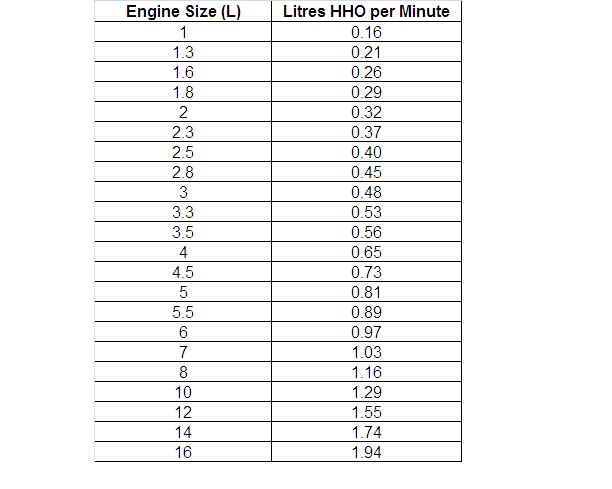
Electricity consumption of hydrogen generators
Only 7 to 10 amps of current are needed to create enough HHO for a standard 3L engine. This current draw is similar to turning on the stereo.
The approximate formula is: Amps = Engine Size (Litres) x 2.5
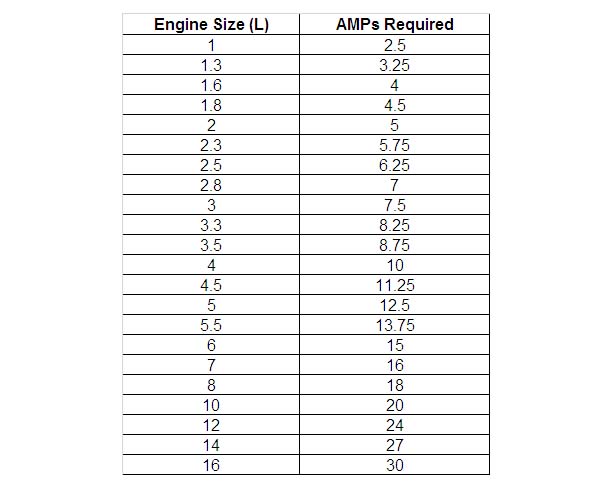
Professional dry cell HHO generators vs wet cells
In a dry cell design only a minimum amount of liquid is contained in the generator body. Most of the water for the system is stored in a remote reservoir.
Dry cells are much more efficient than wet cells as only insignificant amount of current gets wasted in electrolysis.
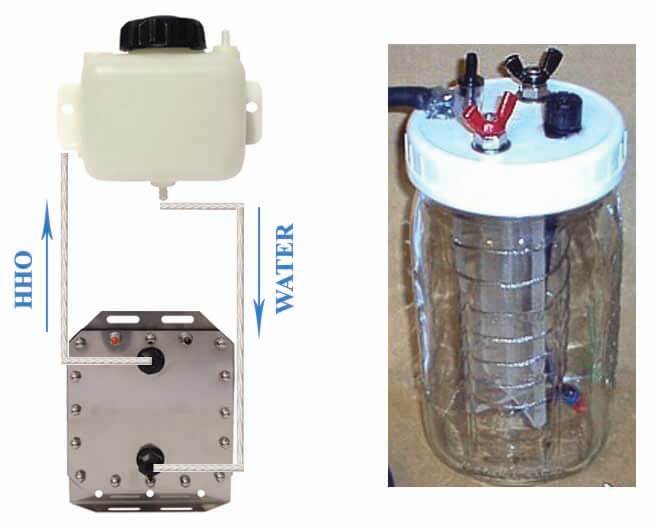
Read more:
How to select correct equipment
Setup and operation of HHO equipment, safety, compatibility
Engine carbon cleaning services vs hydrogen on demand generators
Effect of Hydrogen HHO on Emissions
How to convert engines to use hydrogen as primary fuel
What happens when too much hydrogen is supplied to an engine
Visit our store
Summary

Article Name
Information about hydrogen HHO generators for vehicles, cell design, electricity consumption
Description
Hydrogen HHO generators use electricity from the battery of a vehicle to split water (H2O) into Hydrogen and Oxygen. The resultant gas is referred to as HHO.
Hydrogen is generated only when the engine of the vehicle is activated and it is never stored in the system. The instant that HHO is produced, it gets immediately injected into the engine where it blends with the existing fuel.
The mixture of HHO and fuel burns more efficiently, reducing fuel consumption and the amount of pollutants released in the air.
Author
Better Fuel Technology
Publisher Name
Better Fuel Technology
Publisher Logo







